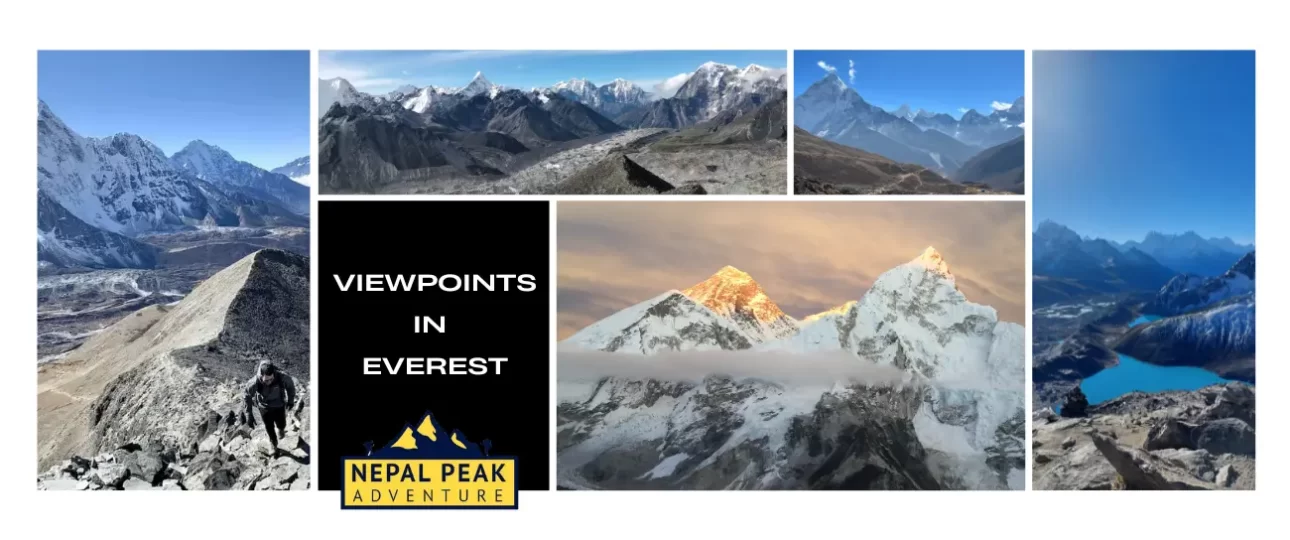Viewpoints in Everest: For the breathtaking mountain views
Everest is not just a mountain, it’s an icon of adventure and an ultimate dream for trekkers and climbers. With its towering peaks and breathtaking surroundings, the Everest region offers some of the most stunning viewpoints in the world. But what makes these viewpoints so special? Is it just the fact that you can see the tallest mountain on Earth, or is there more to it?
Viewpoints in Everest region give trekkers and adventurers the opportunity to witness not only the majesty of Everest but also the grandeur of the entire Himalayan range. In this blog, we will explore the key viewpoints you can reach while trekking in the Everest region, from famous spots like Kala Patthar to hidden gems like Chhukung Ri. Each viewpoint offers a unique perspective of the world’s highest mountain, making your Everest adventure unforgettable.
Everest Base Camp (EBC) Viewpoint 5,364m
Everest Base Camp is the most iconic starting point for those who dream of summiting the world’s tallest peak. However, even if you’re not aiming for the summit, EBC is a destination of its own.
The trek to EBC starts in Lukla, a small mountain town with one of the most famous airports in the world. From here, it’s a multi-day trek through picturesque villages, dense forests, and rugged landscapes before reaching the Base Camp, located at 5,364 meters.
Although you can’t see Everest’s summit directly from Base Camp (it’s obscured by the nearby peaks of Nuptse and Lhotse), you will still be immersed in a dramatic mountain environment. The massive Khumbu Icefall and surrounding peaks make the trek to EBC worthwhile.
Standing at Everest Base Camp, surrounded by mountains and glaciers, gives you a sense of awe that’s hard to describe. You can witness the tented camp of climbers preparing for their expedition, adding to the surreal feeling of being in such a legendary place.
Kala Patthar 5,545m – Best viewpoint in Everest
Kala Patthar is arguably the most famous viewpoint in the Everest region. At 5,545 meters, it’s the best place to get a full view of Everest without needing to climb it.
Many trekkers ascend Kala Patthar early in the morning to witness the sunrise over Everest. The view is absolutely stunning – with the golden rays of the sun lighting up the mighty peak. Or you can choose to ascend at the evening for the golden sunset view over the top of Everest.
From Kala Patthar, you’ll get an unobstructed view of Everest’s summit, along with breathtaking vistas of Nuptse, Pumori, Ama Dablam and other Himalayan giants.
The best time to visit Kala Patthar is early morning or late afternoon when the lighting is perfect for photos, and the views are clear and crisp.
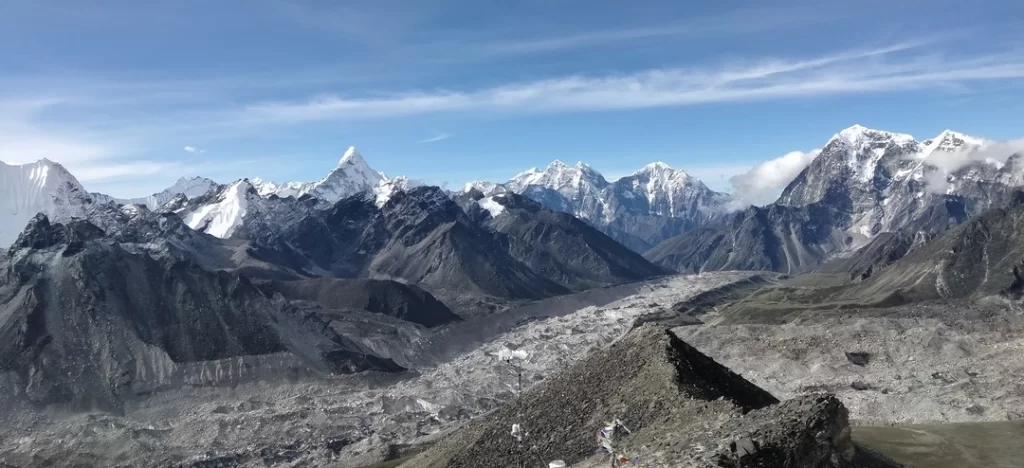
Gokyo Ri 5,357m
If you want to see Everest from a unique angle, Gokyo Ri is your spot.
Gokyo Ri, standing at 5,357 meters, is a challenging trek but offers some of the most jaw-dropping views of Everest and the surrounding lakes.
What sets Gokyo Ri apart is the stunning view of the Gokyo Lakes, which are an emerald green, reflecting the surrounding mountains, including Everest. It’s a sight you won’t easily forget.
Standing at the top of Gokyo Ri, you’ll be able to gaze out at Everest, Cho Oyu, and other high peaks, with the beautiful Gokyo Lakes stretching out below.
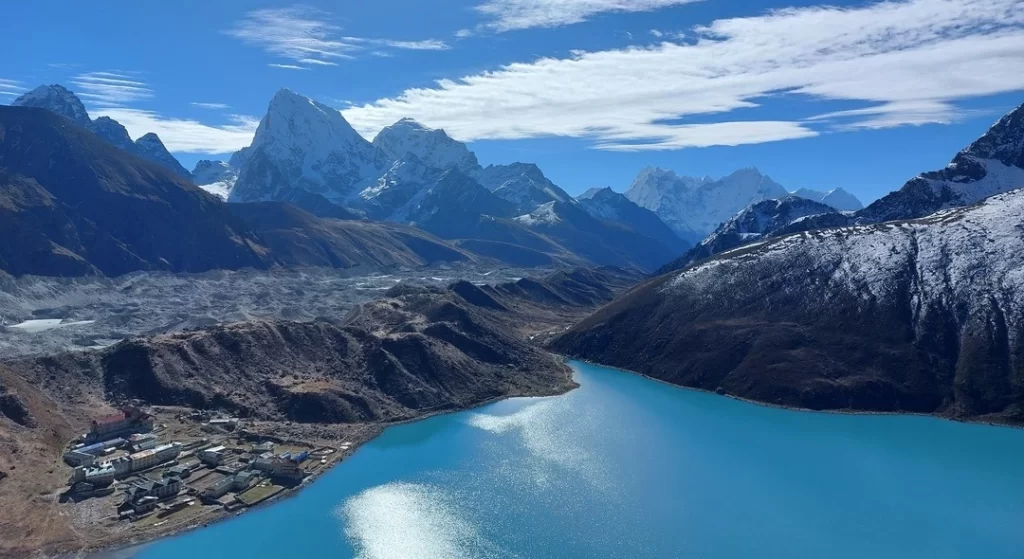
Renjo La Pass 5,360m
Renjo La Pass is another off-the-beaten-path viewpoint that offers unparalleled views of Everest and the Himalayas.
The trek to Renjo La is not for the faint-hearted, as it involves crossing a high pass at 5,360 meters. However, the views at the top make the effort completely worth it.
From Renjo La, you get a panoramic view of Everest and the Gokyo Valley below, offering a fresh perspective compared to the more common routes.
Though less crowded than other viewpoints, Renjo La’s remoteness adds to its charm. It’s a hidden gem in the Everest region.
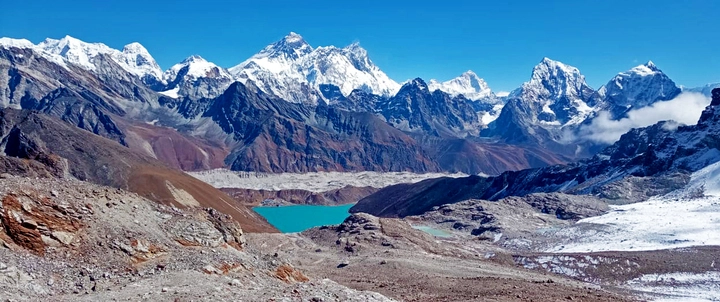
Tengboche Monastery 3,867m
For a spiritual and serene experience, Tengboche Monastery is a must-visit viewpoint on the Everest trek.
Tengboche is a peaceful place to rest and take in the breathtaking views of Everest and Ama Dablam. The monastery itself is a significant cultural and religious site.
From the monastery, you can get beautiful, uninterrupted views of both Everest and Ama Dablam, one of the most photogenic mountains in the world.
Tengboche is not just a viewpoint; it’s a cultural hub that offers insight into the Sherpa culture and Tibetan Buddhism. Many trekkers find spiritual solace here before continuing their journey.
Chhukung Ri 5,546m
Chhukung Ri is an underrated viewpoint, perfect for those seeking a more challenging adventure.
Situated at 5,546 meters, Chhukung Ri offers views of Lhotse, Nuptse, and Ama Dablam, making it a must-see for serious trekkers.
From the top, you’re rewarded with stunning views of several high peaks, including Everest’s south face in the distance.
Though not as famous as Kala Patthar, Chhukung Ri offers a more tranquil experience, as fewer trekkers venture here.
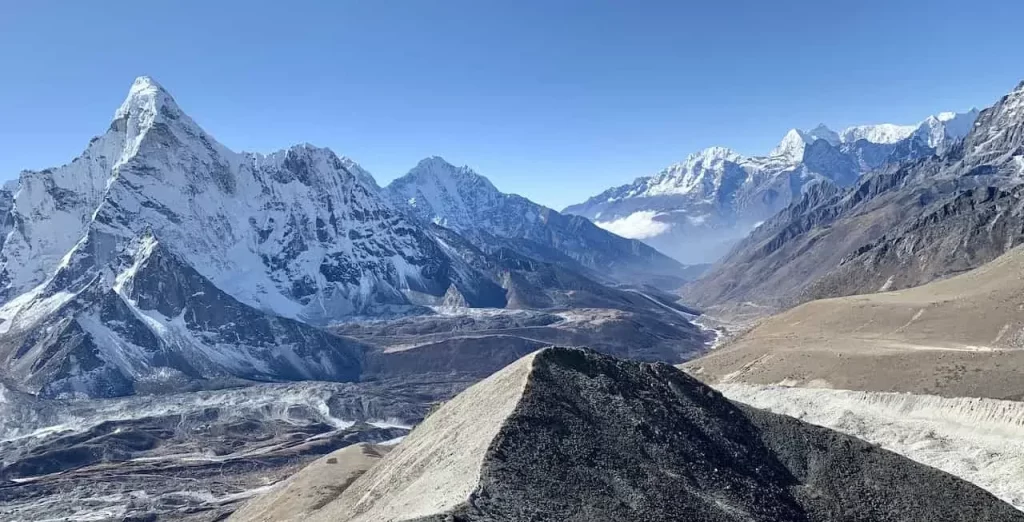
Everest View Hotel 3,880m
The Everest View Hotel is a unique destination, offering trekkers and tourists the opportunity to experience the majestic beauty of Mount Everest without the need for a strenuous hike.
Situated at an altitude of 3,880 meters (12,730 feet), Everest View Hotel is officially recognized by the Guinness World Records as the highest-altitude hotel in the world. The panoramic view of Everest from the hotel is simply breathtaking. On clear days, you can enjoy uninterrupted views of the world’s tallest mountain while relaxing in luxury.
For those who want to enjoy Everest without extensive trekking, this hotel is the perfect spot. Many people make a short trek here from Namche Bazaar just for the opportunity to sip tea or coffee while basking in the grandeur of the Himalayas. Its terrace offers a stunning vantage point for photographers, making it a must-visit.
Imagine sitting comfortably, sipping a warm cup of tea, with Mount Everest in full view — that’s the magic of Everest View Hotel. It offers a rare combination of comfort and a world-class view of the Himalayas.
Kongma La Pass 5,535
Kongma La Pass is part of the famous Three Passes Trek, and reaching its summit offers a once-in-a-lifetime view of the Himalayas.
At an altitude of 5,535 meters (18,159 feet), Kongma La is the highest of the Three Passes. The trek to this pass is not for the faint of heart. It’s a demanding hike, but the moment you reach the top, you’re rewarded with a panoramic view of the Everest region, including Everest itself, Lhotse, and the vast Khumbu Glacier stretching out below.
The view from Kongma La encompasses the Khumbu Glacier, the largest in Nepal, along with spectacular vistas of towering peaks. The contrast between the icy glacier and the rugged mountains is mesmerizing.
The best time to cross Kongma La is during the pre-monsoon (March to May) and post-monsoon (September to November) seasons. These times offer the best chance for clear skies and moderate temperatures, making the experience more enjoyable.
Nangkartshang Peak 5,083m
Nangkartshang Peak is a popular acclimatization stop for trekkers heading to higher altitudes like Everest Base Camp. It offers fantastic views with relatively less effort compared to other peaks.
Standing at 5,083 meters (16,676 feet), Nangkartshang Peak is a perfect place to help your body adjust to the higher altitudes of the Khumbu region. The hike to the peak is challenging but manageable, making it an ideal acclimatization stop.
From the summit of Nangkartshang, you’ll enjoy sweeping views of Everest, Ama Dablam, and even the distant Makalu, the fifth-highest mountain in the world. The location offers a beautiful contrast between towering mountains and the deep valleys below.
The trek to Nangkartshang Peak typically starts from Dingboche. It’s a half-day trek, making it an excellent side trip for those looking to acclimatize before continuing on their Everest adventure.
Cho La Pass 5,420m
Cho La Pass is another high-altitude pass that forms part of the Three Passes Trek, connecting the Gokyo Valley with the Everest Base Camp trek.
At 5,420 meters (17,782 feet), Cho La Pass is a challenging and exhilarating trek. The pass offers jaw-dropping views of snow-capped peaks and glaciers, making the effort entirely worth it. The crossing itself is often icy, but the scenery is among the best in the Everest region.
One of the highlights of this pass is the crossing over the Cho La Glacier, an experience that adds a sense of adventure to the trek. You will feel as though you are walking through a frozen landscape, surrounded by towering mountains.
The best times to cross Cho La are in the spring (March to May) and autumn (September to November). These seasons offer more stable weather conditions, essential for safely crossing this high-altitude pass.
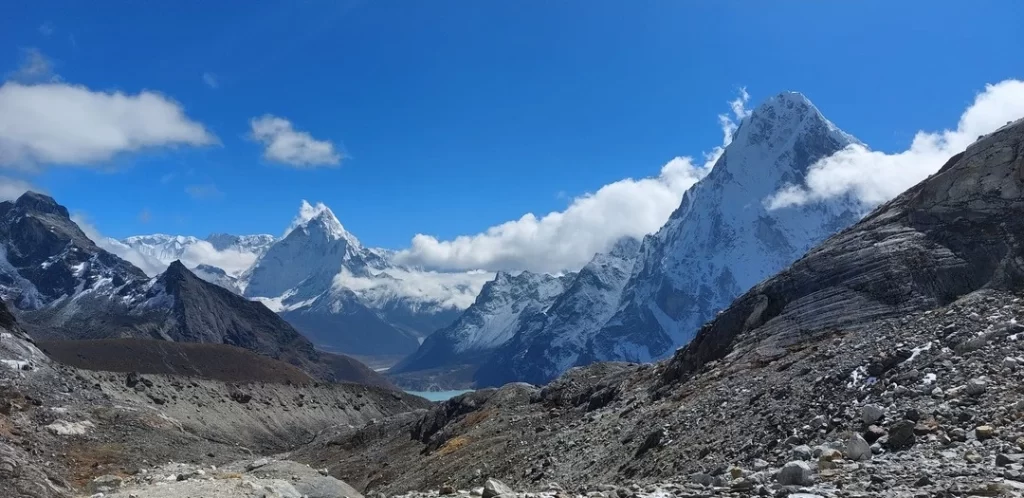
Conclusion
The viewpoints in Everest offer more than just a glimpse of the highest mountain in the world. They provide a journey through the heart of the Himalayas, showcasing the beauty of both the mountains and the culture of the people who live there. Whether you’re standing at the top of Kala Patthar, marveling at the Gokyo Lakes, or enjoying a quiet moment at Tengboche Monastery, each viewpoint offers something unique that will stay with you long after your trek is over.
FAQs
What is the best viewpoint to see Mount Everest?
Kala Patthar is considered the best viewpoint for a close-up view of Everest.
How hard is it to reach Kala Patthar?
It’s challenging due to the high altitude, but trekkers with basic fitness can reach it with proper acclimatization.
Can I see Everest from Namche Bazaar?
Yes, you can get a glimpse of Everest from certain spots in Namche Bazaar.
What is the best season for viewpoint trekking in Everest?
The best seasons are pre-monsoon (March to May) and post-monsoon (September to November).
Are the viewpoints in Everest accessible for beginners?
Some viewpoints, like Kala Patthar, require experience, but with proper acclimatization, many can be accessed by novice trekkers.
